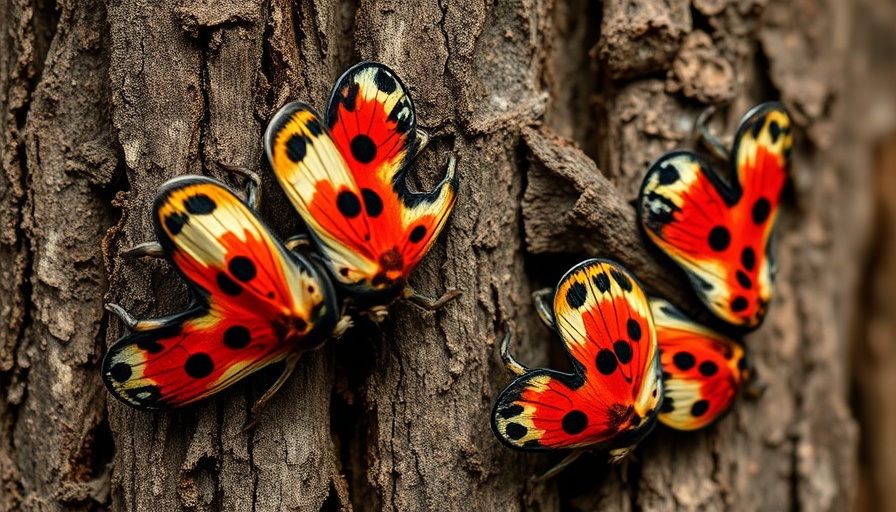
Understanding Spotted Lanternflies: A Growing Concern for Homeowners
Invasive pests can wreak havoc not just on agriculture, but also on our gardens and patios. The spotted lanternfly, with its striking colors and unusual appearance, is among the latest threats that homeowners in Southeast Michigan and across the East and Midwest need to be on the lookout for. First identified in the U.S. back in 2014, these pests continue to spread due to their lack of natural predators and their ability to lay eggs on materials transported across state lines.
What Are Spotted Lanternflies?
Spotted lanternflies, also known as SLFs, are planthoppers that display a unique and beautiful appearance. Adults are about an inch long, flaunting a distinctive pattern of speckled gray forewings and bright red hindwings. Although their striking colors may catch your eye, they’re a serious problem for crops, especially grapes and other fruit trees.
The nymphs, or young spotted lanternflies, look entirely different. They start off as bright red and morph into black with white spots as they mature. This color change gives them a camouflage advantage against tree bark, making it challenging for many to identify them.
The Threat to Your Home and Garden
While spotted lanternflies don’t pose a direct threat to humans or pets—they don't bite or sting—they can cluster in large numbers, creating quite the spectacle. More importantly, they feed on plant sap, which harms trees and plants, potentially decimating your home garden or landscape with their heavy feeding.
For those in Southeast Michigan, the economic implications can be particularly serious. Imagine losing a crop of apples or not having enough hops for your favorite local brewery. Hence, it’s critical for everyone to learn how to identify and combat this pest.
Taking Action Against Spotted Lanternflies
What can homeowners do to help manage the spread of spotted lanternflies? First, know what to look for. Check trees, fences, and other vertical structures in your yard for egg masses—small, gray, and resembling a smear of mud. It's crucial to crush the eggs if you spot them, which can make a significant difference.
Local departments of agriculture have even been taking preventive steps, such as quarantining infected areas when spotted lanternflies are detected. But we also need to stay vigilant in our own backyards. Simple steps like inspecting your property and sharing information with neighbors can help put a dent in their expansion.
Staying Informed and Prepared
As Michigan homeowners, we need to stand together against these invasive insects. Educate children and family members on recognizing spotted lanternflies and how to eliminate them. By working collectively, we foster a community that’s informed about the dangers they pose to our gardens and local ecosystems.
In addition, consider connecting with local gardening clubs or agricultural organizations that focus on pest management. They often offer resources and workshops on best practices for handling invasive pests like the spotted lanternfly. With a little education and action, we can make our yards and gardens resilient against these uninvited pests.
 Add Row
Add Row  Add
Add 




 Add Row
Add Row  Add
Add 

Write A Comment